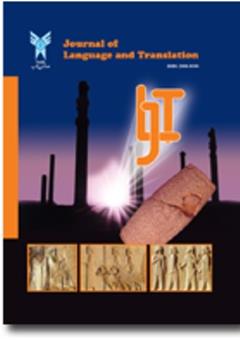Assessing Persian-English Translation Quality: A Housian Model
الموضوعات : All areas of language and translation
1 - Department of English, Faculty of Literature and Languages, Arak University, Arak-Iran
الکلمات المفتاحية: Field, Mode, Register, Tenor, Translation Quality Assessment,
ملخص المقالة :
This paper aims to assess the quality of Daneshvar’s short story (‘Chashme-e-Nim Khofteh’) with its English translation (‘The Half-Closed Eye’) by Lewis (1997) in light of House’s revised model (1997; 2001). Firstly, the main literature on the House’s TQA is reviewed. House’s newly modern revision concerns the categories for register analysis, the distinction between overt and covert translation including the cultural filter, as well as a reconsideration of the whole notion of translation evaluation. Secondly, the quality of Daneshvar’s translated story is assessed concerning its English translation. In doing so, a text profile is given for the ST and the TT, and then, the functions of both the ST and the TT are stated. Third and finally, the overall quality of the English translation of the story is assessed. Regarding the target field, a lot of mismatches in three lexical, syntactic, and textual means were observed. Regarding tenor, the changes the translator has made in the syntactic and textual means have changed the informal/ casual style of the ST into a bit of a formal/ informal one. Regarding mode, no mismatches happened in the English translation. Also, the English translation is overt and needs not a cultural filter to be applied.
Al-Qinai, J. (2000). Translation quality assessment. Strategies, parametres and procedures. Meta, 45(3), 497-519.
Brunette, L. (2000). Towards a Terminology for Translation Quality Assessment. The Translator, 6, 169-182. https://doi.org/10.1080/13556509.2000.10799064
Crystal, D., & Davy, D. (1969). Investigating english style. Longman.
Daneshvar, S. (1359/1980). The half-closed eye. In Be ki salam konam? {To whom should I say Hello?}. Kharazmi.
Halliday, M. A. K. (1978). Language as social semiotic: The social interpretation of language and meaning. Edward Arnold.
Hatim, B. (1998). Translation Quality Assessment. The Translator, 4(1), 91-100. https://doi.org/10.1080/13556509.1998.10799008
Hewson, L. (2011). An Approach to Translation Criticism: Emma and Madame Bovary in translation. John Benjamins Publishing Company. https://books.google.com/books?id=eShzAAAAQBAJ
House, J. (1977). Translation quality assessment: A model revisited. Gunter Narr Verlag.
House, J. (1997). Translation quality assessment: A model revisited. Gunter Narr Verlag.
House, J. (2001). Translation quality assessment: Linguistic description versus social evaluation. Meta, 46(2), 243-257.
Karoubi, B. (2016). Translation quality assessment demystified. Babel. Revue internationale de la traduction/International Journal of Translation, 62(2), 253-277.
Karoubi, B. (2017). Assessor-centered translation quality assessment: a case study. Asia Pacific Translation and Intercultural Studies, 4(1), 22-49. https://doi.org/10.1080/23306343.2017.1280761
Moayyad, H. (1997). Stories from Iran. mage.
Nord, C. (1997). Translating as a purposeful activity : functionalist approaches explained. St. Jerome.
Reiss, K. (1971/2000). Möglichkeiten und Grenzen der Übersetzungskritik: Kategorien und Kriterien für eine sachgerechte Beurteilung von Übersetzungen (Vol. 12). Hueber.
Schäffner, C. (2002). The role of discourse analysis for translation and in translator training. Multilingual Matters.


